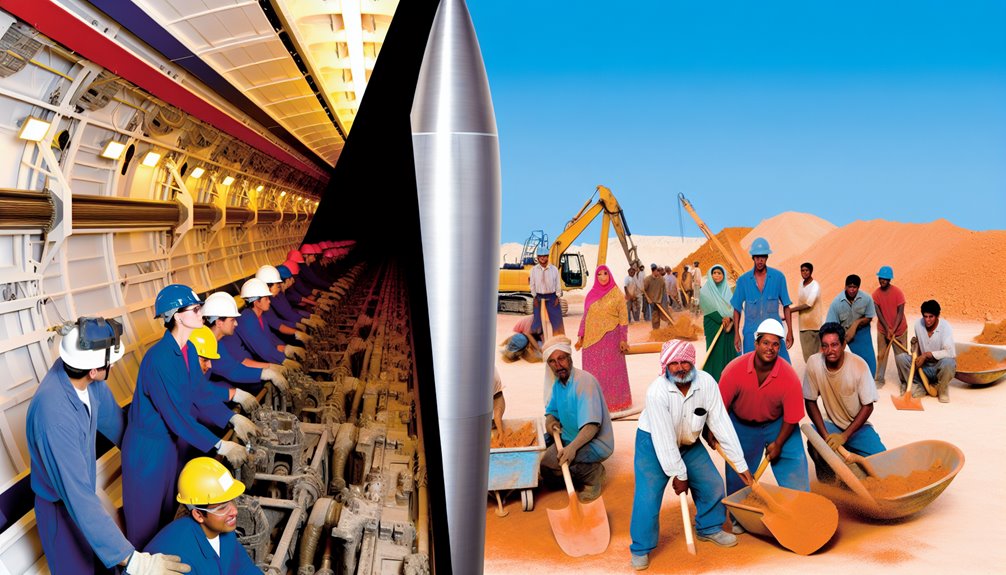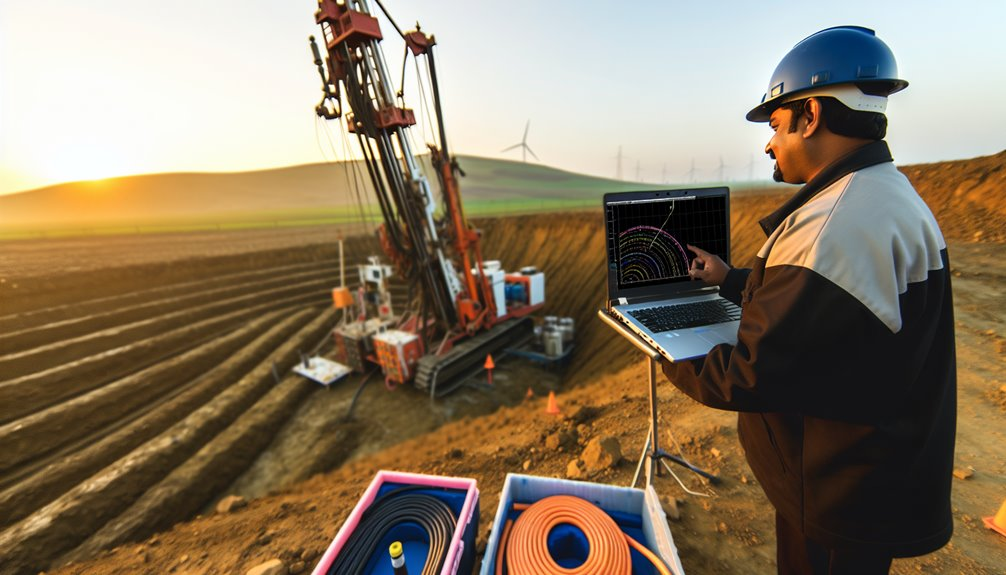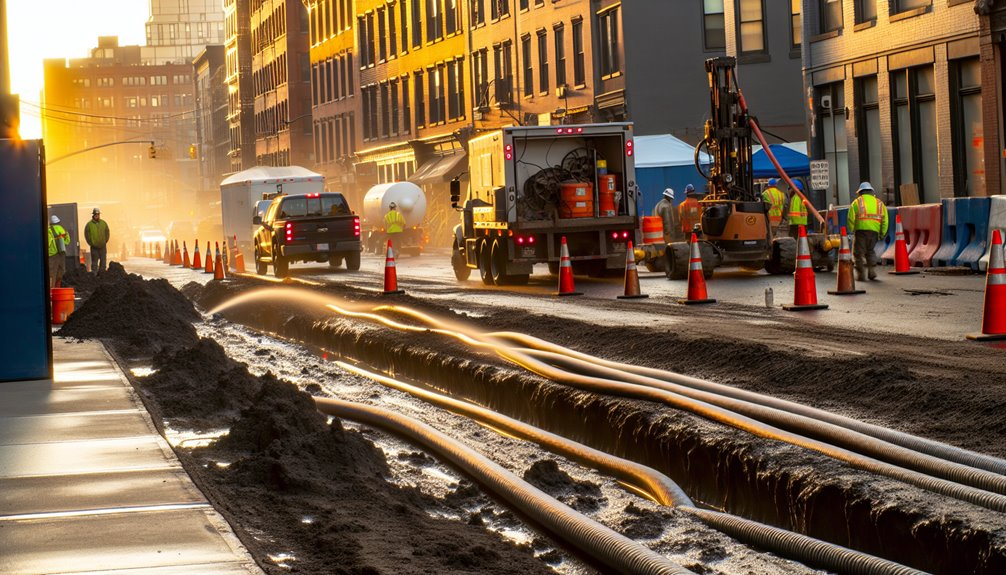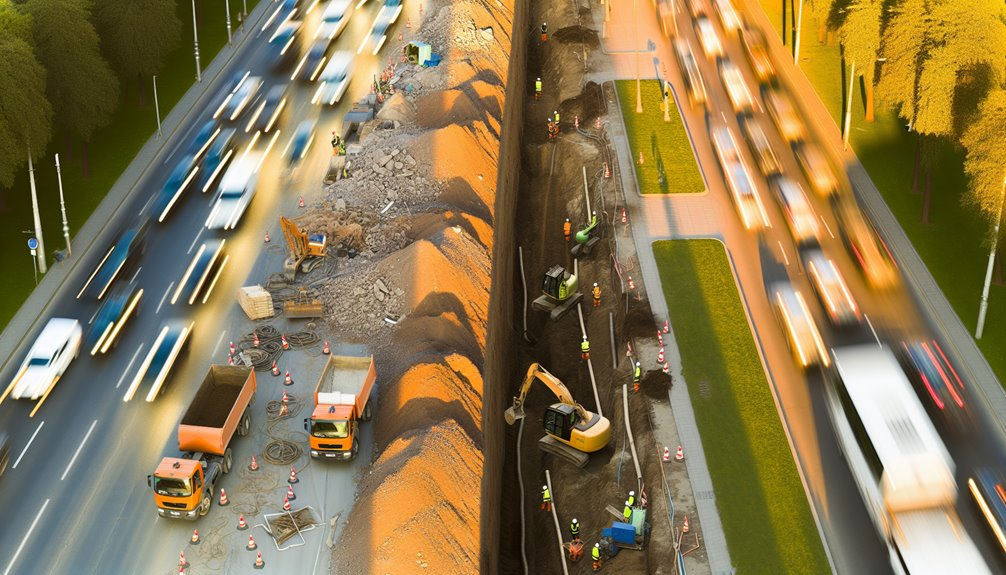When considering underground installations, you might find yourself weighing the cost benefits of missile boring against methods like horizontal directional drilling (HDD) and trenching. Missile boring can considerably lower your expenses, primarily due to its minimal surface disruption and reduced need for excavation, making it a standout choice in dry soil conditions. While HDD ranges from $10 to $80 per linear foot, the cost-efficiency of missile boring in compact areas cannot be overstated. This comparison raises the question: what might the long-term savings look like?
Overview of Missile Boring and Its Cost Implications
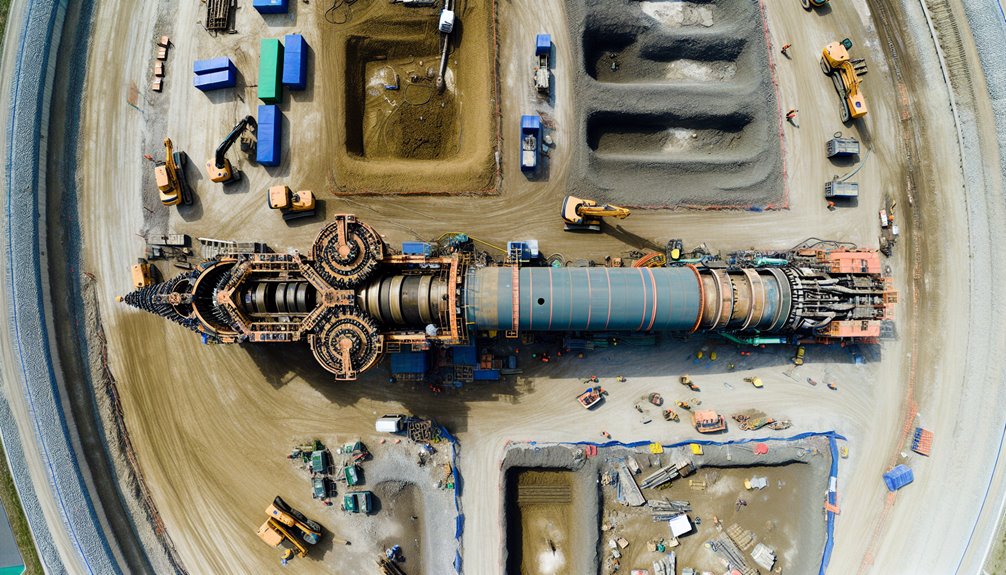
While missile boring is a less commonly known method of installing underground utilities, it offers significant cost advantages and minimal surface disruption compared to more traditional methods like trenching or directional drilling. You'll find that missile advantages include a lower project cost due to the elimination of extensive surface excavation. This method is particularly effective in reasonably dry soils, where its non-steerable, air-powered percussion tool works efficiently. Soil suitability is vital; the technique thrives in conditions where less water saturation prevents tool deviation, ensuring a more precise installation. This suitability translates to quicker installations and fewer disruptions, making missile boring ideal for compact worksites where space and minimal environmental impact are priorities. Missile boring is less versatile than methods like horizontal directional drilling, which can handle larger diameters and more complex soil conditions due to its steerable capabilities.
Horizontal Directional Drilling: Expenses and Benefits
Despite its higher initial costs, horizontal directional drilling (HDD) provides substantial long-term savings and operational benefits, particularly in challenging environments. Your cost breakdown reveals that while equipment and material expenses vary—ranging from basic pipe installations at $10 per linear foot to complex setups in rocky terrains costing up to $80 per linear foot—these are offset by HDD's efficiencies. The method minimizes surface disruption and the associated restoration costs, essential in urban settings where avoiding infrastructure damage is critical. Furthermore, skilled labor, though pricier, enhances project efficiency, maneuvering through dense utility networks and reducing potential delays. Consequently, investing in HDD not only meets immediate logistical needs but also guarantees reduced future expenditures on maintenance and environmental compliance. The ability to bypass obstacles like rivers and roads without excavation further enhances the method's appeal, making HDD a versatile and less disruptive option.
Trenching Techniques and Financial Considerations
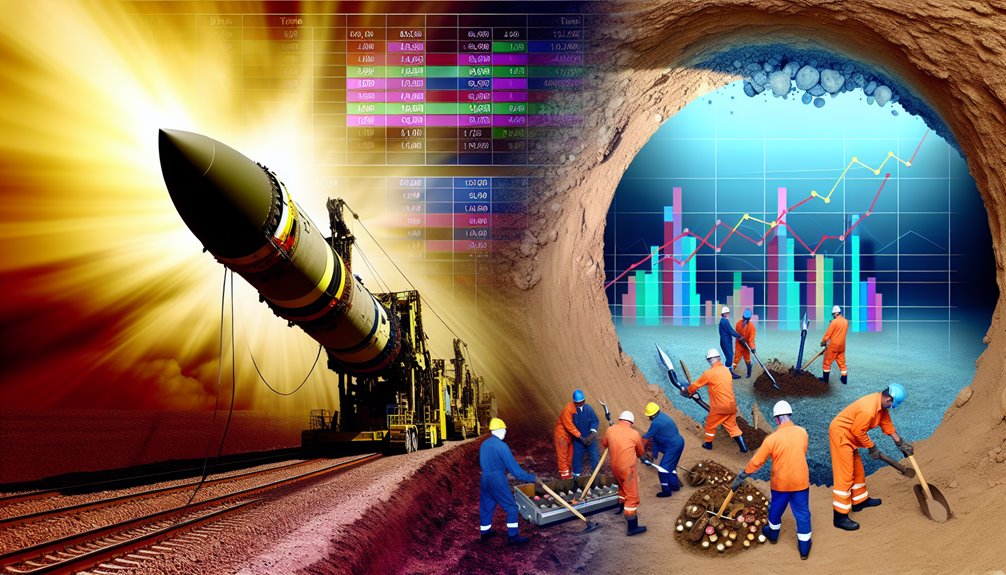
Shifting focus from horizontal directional drilling, we now examine the traditional trenching techniques and their financial implications.
Trenching cost per linear foot varies widely, from $5 in simple dirt environments to $12 in more complex asphalt or concrete scenarios. The key cost factors here include the type of surface and the associated preparation needs.
Trenching in hardened materials not only requires expensive cutting tools but also significant backfilling and restoration efforts, which can escalate overall expenses.
Additionally, trenching efficiency is greatly influenced by soil conditions and the specific backfill specifications.
It's essential to take these variables into account to manage costs effectively and optimize the trenching process for both financial viability and operational success.
Environmental and Regulatory Costs Across Different Methods
As we analyze the environmental and regulatory costs associated with different boring and trenching methods, it's clear that these factors greatly influence project expenses.
Missile boring and directional boring stand out for their minimal ecological disturbance. You'll find these methods preserve natural habitats effectively, ensuring lower restoration costs and compliance with stringent environmental regulations.
Unlike traditional trenching, which often disrupts more surface area and requires extensive remedial actions, the innovative boring techniques avoid such pitfalls. This not only speeds up project completion by reducing rehabilitation time but also diminishes the ecological footprint.
Importantly, adhering to regulatory compliance through these methods involves fewer complexities in obtaining necessary permits, particularly in environmentally sensitive areas, thereby streamlining project approval processes.
Long-term Maintenance and Operational Costs Comparison
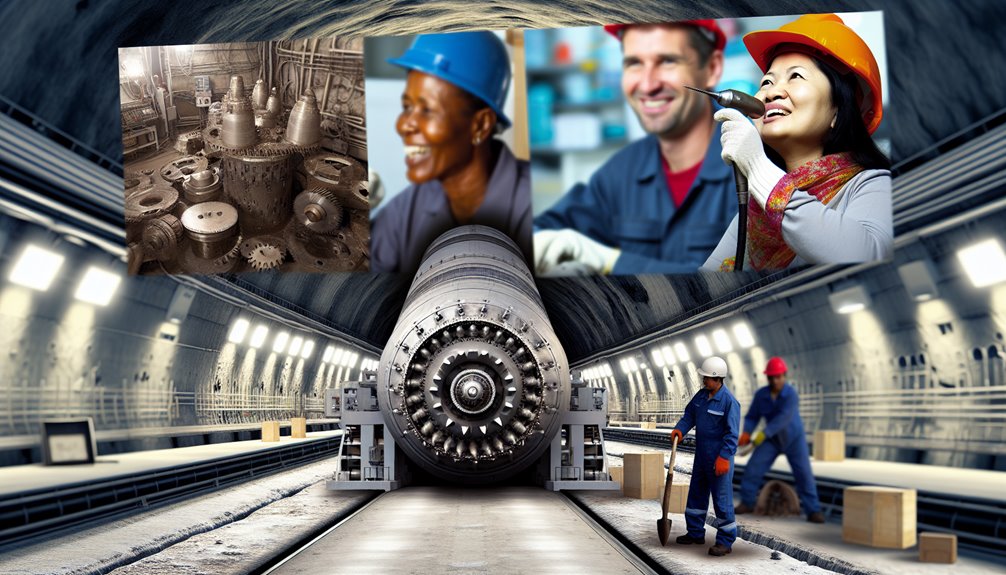
When considering the long-term maintenance and operational costs of missile boring tools, it's crucial to assess both the direct expenses and the potential savings.
Your maintenance strategies must include regular cleaning, adherence to operational guidelines, and thorough inspections of air hoses and couplers to prevent downtime and extend tool life.
Adjusting tools for varying soil conditions not only prevents damage but also enhances performance, ensuring cost efficiency.
By investing in in-house or in-field maintenance capabilities, you reduce labor costs and minimize the likelihood of emergency repairs.
Ultimately, maintaining your tools according to manufacturer standards maximizes their lifespan and operational efficiency, thereby safeguarding your investment and keeping operational costs at bay.
Conclusion
To sum up, you'll find that opting for missile boring not only cuts down on your initial investment—often greatly cheaper per linear foot than HDD or trenching—but also minimizes long-term maintenance costs. This method reduces environmental disruption and simplifies compliance with regulations, offering you a more sustainable and cost-effective solution. Carefully consider missile boring for your next project, especially in compact areas or where dry soil conditions prevail, to optimize both financial and operational efficiencies.
If you're interested in learning more about how missile boring can benefit your project, I invite you to visit Boring Bros at boringbro.com. You can also give us a call at (954) 639-6167. We're here to help and would love to discuss how we can make your project a success!

